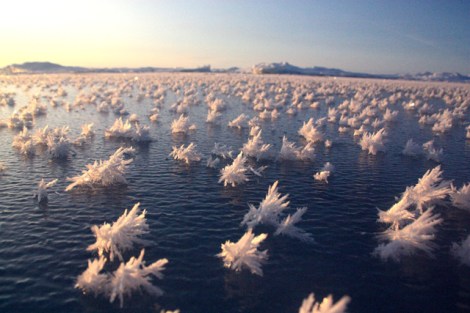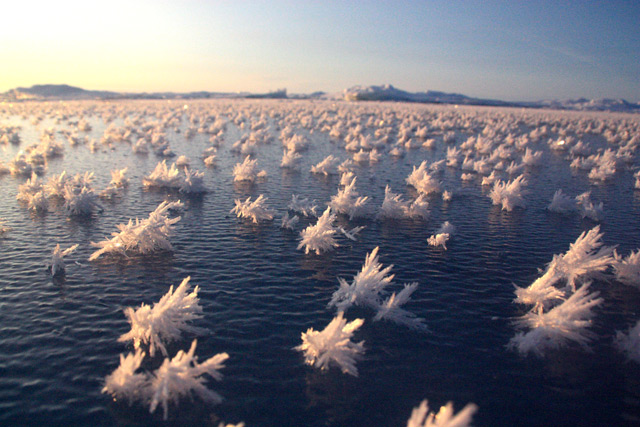University of Washington graduate student Jeff Bowman and professor Jody Demind traveled to the central Arctic ocean to study these beautiful structures, called frost flowers. What they found is that they’re not just decorative — they also support an ecosystem of strange, hardy, cold-loving micro-critters.
Here is how frost flowers are created:
The cold, moist air above the open cracks becomes saturated and frost begins to form wherever an imperfection can be found on the ice surface. From these nucleation points the flower-like frost structures grow vertically, quickly rising to centimeters in height. The hollow tendrils of these “frost flowers” begin to wick moisture from the ice surface, incorporating salt, marine bacteria, and other substances as they grow. The fog dissipates and the Arctic sun lights the surface of the frost flowers, initiating a cascade of chemical reactions. These reactions can produce formaldehyde, deplete ozone, and actually alter the chemical composition of the lower atmosphere.
Frost flowers are, Colossal writes, “essentially a temporary ecosystem, not unlike a coral reef.”

The microbes that live like the cold frost flowers, Bowman and Demind found, even though the flowers are colder than the sea ice around them. They can thrive in the extreme cold, and they could tell us about how life works in the coldest places, like far-away icy planets and their frosty moons.






